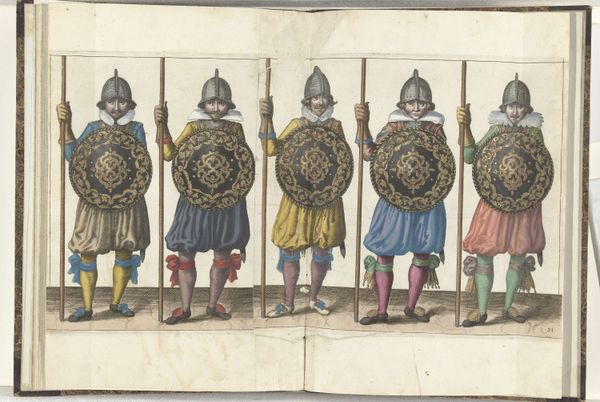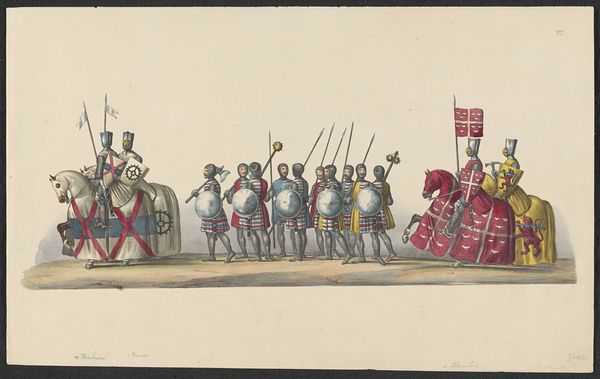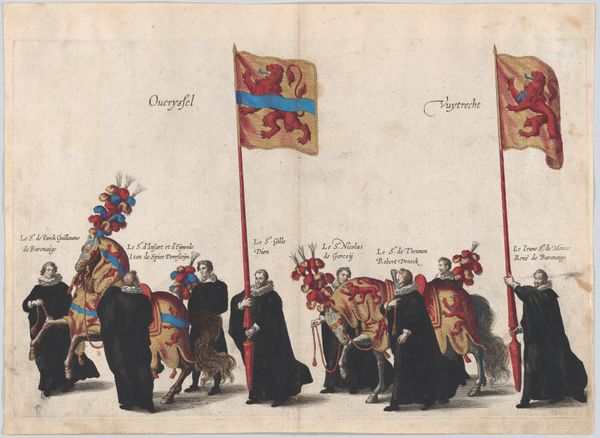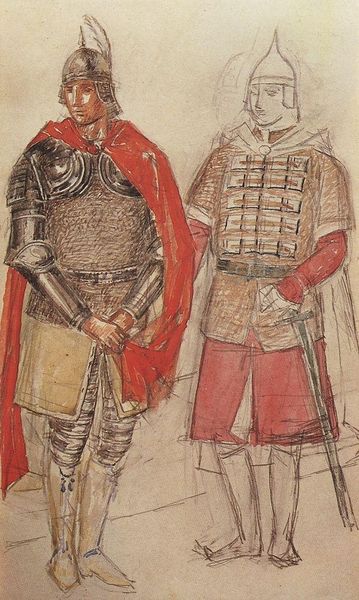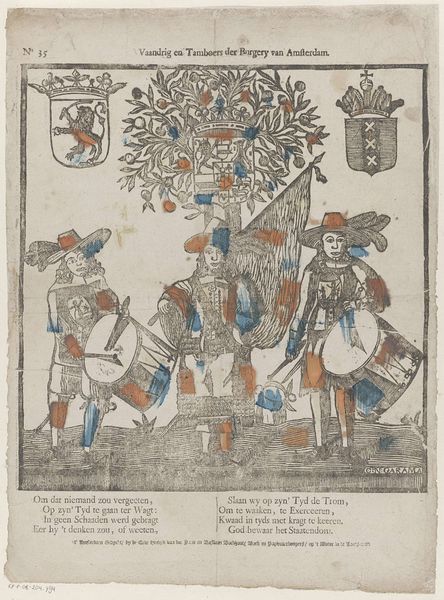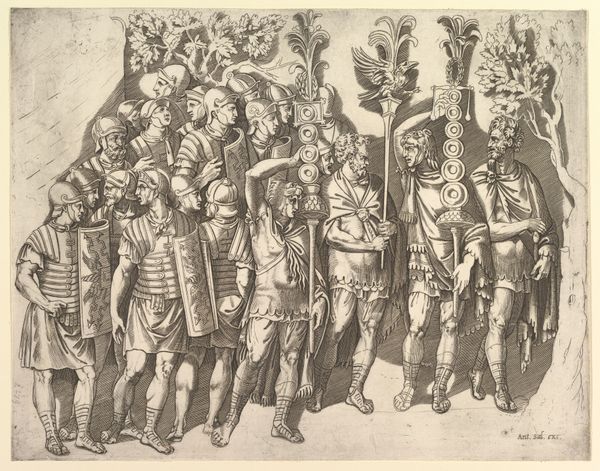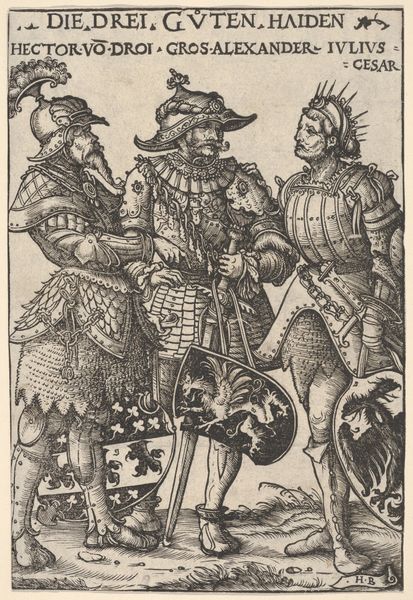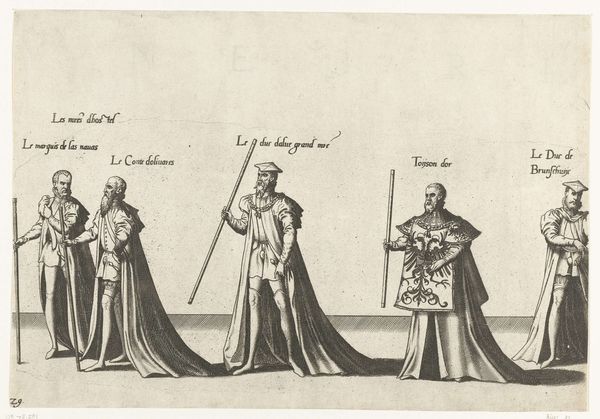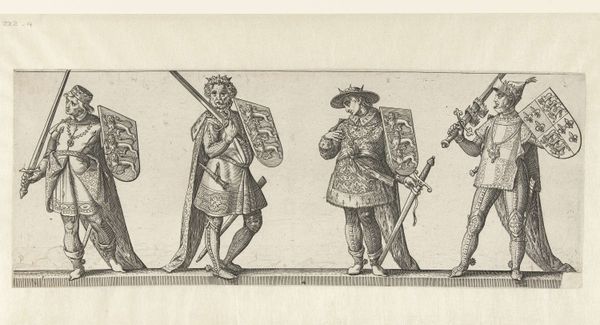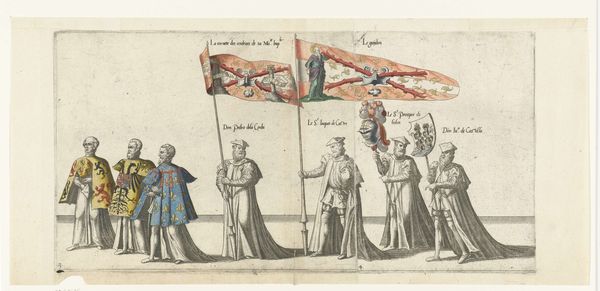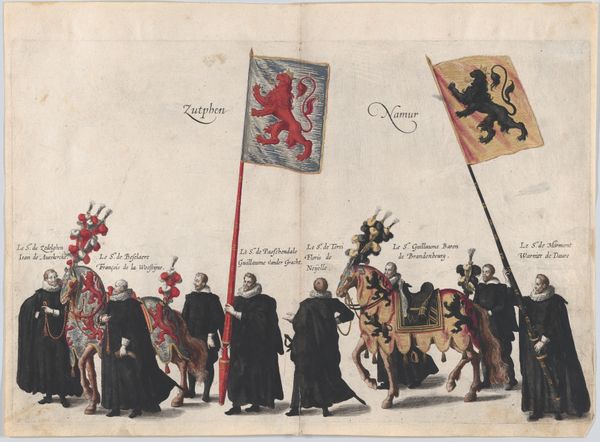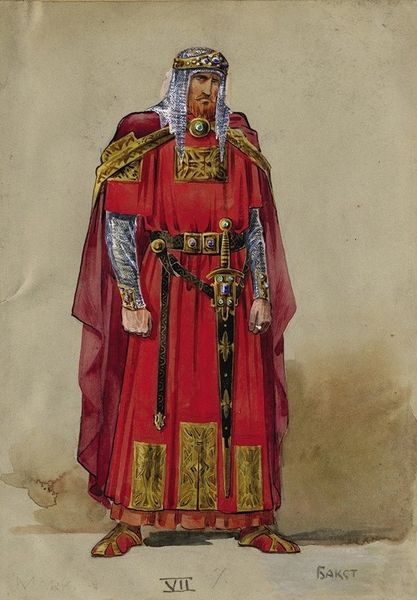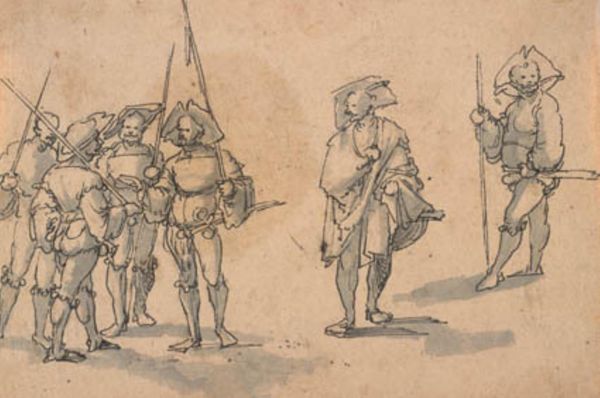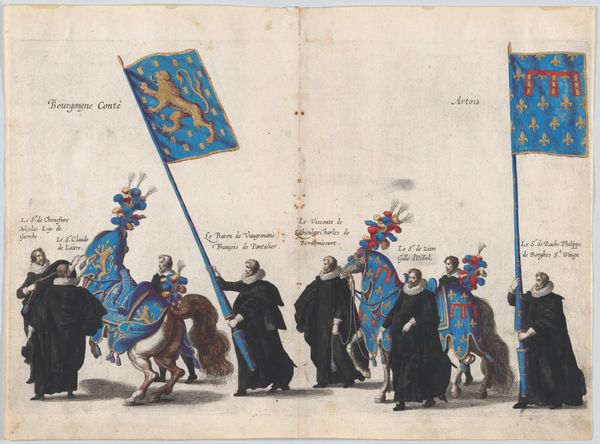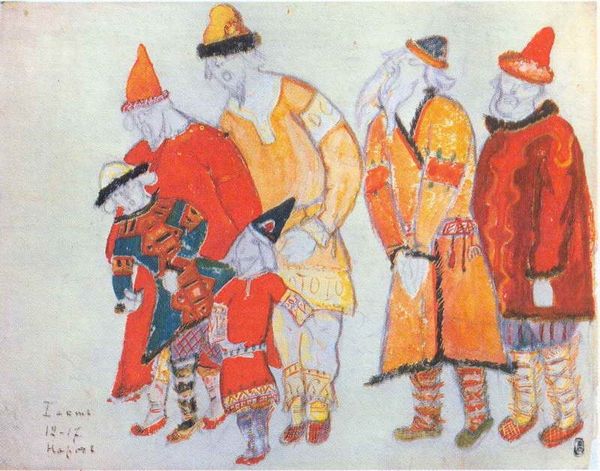
drawing, coloured-pencil
#
portrait
#
drawing
#
coloured-pencil
#
medieval
#
figuration
#
coloured pencil
#
history-painting
Dimensions: 133 mm (height) x 260 mm (width) (bladmaal)
Curator: Here we have Agnes Slott-Møller’s 1925 drawing, “Marsken og hans mænd,” crafted with coloured pencils. The immediate impression is one of studied heraldry, and a restrained, almost academic mood. Editor: Yes, there is that sense of distance. But what strikes me is the materiality – the tangible grain of the paper coming through the delicate colour pencil strokes. It gives these figures, especially their armor, a feeling of being crafted, rather than simply drawn. Curator: Absolutely. And note the conscious reference to medieval art—particularly in the flattening of perspective, and in the rigid, almost iconic presentation of these figures. Each knight has a clearly delineated heraldic symbol, which are of course powerful visual cues representing lineage and authority. What do you see in these symbols? Editor: The lion rampant, hearts, stag antlers, wings…They seem intended to evoke the spirit of noble beasts and powerful natural forces, almost as if to invest the wearers with a mythical status. But I also wonder about the choice of coloured pencil. Was it simply an economical choice, or was the artist making a statement by employing what we might traditionally think of as a less “serious” medium? Curator: An excellent point. Considering Slott-Møller's exploration of historical subjects, using coloured pencils suggests a deliberate demystification, almost a leveling of the past. Perhaps she aims to show these figures, symbols and all, as ultimately human constructions, assembled through artistic labor like any other material object. It disrupts the perceived grandiosity of history. Editor: And those faint written annotations above each figure – likely indicating names or roles - are really interesting from a production point of view. Are we looking at an under-drawing? Notes for something larger? Curator: Potentially preparatory work for a larger composition. Those written inscriptions could represent the artist's research, or maybe even serve as direct instructions for other collaborators, hinting at a collaborative workshop environment involved in the creation of her pieces. Editor: So it becomes less about pure artistic genius, and more about the practical processes of assembling and transmitting history through material means. This perspective grounds what could easily become romanticised in symbolic narratives of medieval history. I find that refreshing. Curator: Indeed. I initially approached this drawing as an iconographer might—tracing the meanings embedded within those heraldic symbols—but your materialist reading reveals a far more nuanced picture of art production and its role in shaping our perception of history.
Comments
No comments
Be the first to comment and join the conversation on the ultimate creative platform.
